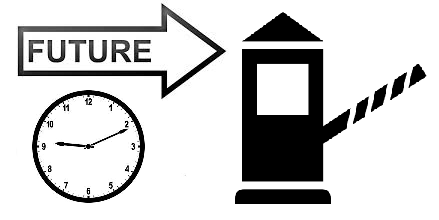Free public transit and roads without traffic? Congestion pricing will provide both
Los Angeles Times, By Kerry Cavanaugh, Dec 08, 2018
New light rail and subway lines completed in less than a decade! Fewer clogged freeways! And free transit “forever and ever.”
What could possibly bring about this magical transformation of Los Angeles’ notoriously awful transportation system?
Congestion pricing.
Los Angeles County Metropolitan Transportation Authority CEO Phil Washington broached the idea this week of charging rush hour tolls on drivers to help build new transit lines faster and to subsidize fares.
“We think that with congestion pricing done right, we can be the only city in the world to offer free transit service in time for the 2028 Olympics,” Metro CEO Phil Washington said. CurbedLA has a good overview of the discussion at the Metro board.
After London enacted a congestion charge to enter the city center in 2003, car traffic dropped by nearly 40%.
Under congestion pricing, cities require drivers to pay a fee to use the roads during the busiest times of the day. The goal is to reduce traffic by giving people a powerful incentive to take alternative modes of transportation or avoid traveling during rush hour.
In the past, congestion pricing has been deemed so controversial that officials and politicians were nervous about even mentioning it. Last year the Southern California Association of Governments, the six-county regional planning agency, launched a campaign to start a conversation about maybe, possibly, thinking about congestion pricing. The term “congestion pricing” can be so fraught that SCAG called for charging “decongestion fees” in what it called “Go Zones.”
But public opinion (or political will) could be shifting. Next month, New York will enact a surcharge on all rides that for-hire vehicles, including taxis and Ubers, take below 96th Street in Manhattan. The money will fund subway operations. New York lawmakers are considering applying the fee to all vehicles entering the busiest parts of the city. Seattle’s mayor is also pushing for tolling on certain roads to reduce traffic.
And why not? It’s a proven model. After London enacted a congestion charge to enter the city center in 2003, car traffic dropped by nearly 40% and travel speeds on the city streets increased. Stockholm has had success with its congestion tax since was implemented a decade ago. Traffic congestion was eased and air pollution in heavily traveled areas dropped too. While Swedes were initially skeptical of the tax — polls showed some 70% opposed it before implementation — within a few years, public opinion flipped and 70% supported the tax.
Metro’s idea is to use the money collected from congestion pricing to accelerate the construction of eight major transportation projects, including a rail line through the Sepulveda Pass, so they are completed before Los Angeles hosts the 2028 Olympics. Congestion pricing could raise $12 to $52 billion over the next decade, depending on where and how the tolls were be applied.
Congestion pricing is really only fair if a city has good, reliable public transit. Otherwise, people who live in neighborhoods with poor transit service and no alternative but to drive are penalized by the fee. It would make sense, for example, to toll drivers heading downtown, where there are ample transit options during rush hours.
The revenue from the toll could be plowed back into building more bus and rails and lowering fares so it’s even cheaper and more convenient to take public transit. Riders would have an incentive to take a more environmentally friendly mode of travel. They would pay more to drive but they’d presumably enjoy less traffic-clogged roadways.
So, yes, congestion pricing could help Los Angeles prepare to host the 2028 Olympics. More importantly, congestion pricing could be the kickstart we need to dramatically reshaping our transportation system to reduce driving, reduce greenhouse gas emissions and slow climate change.
